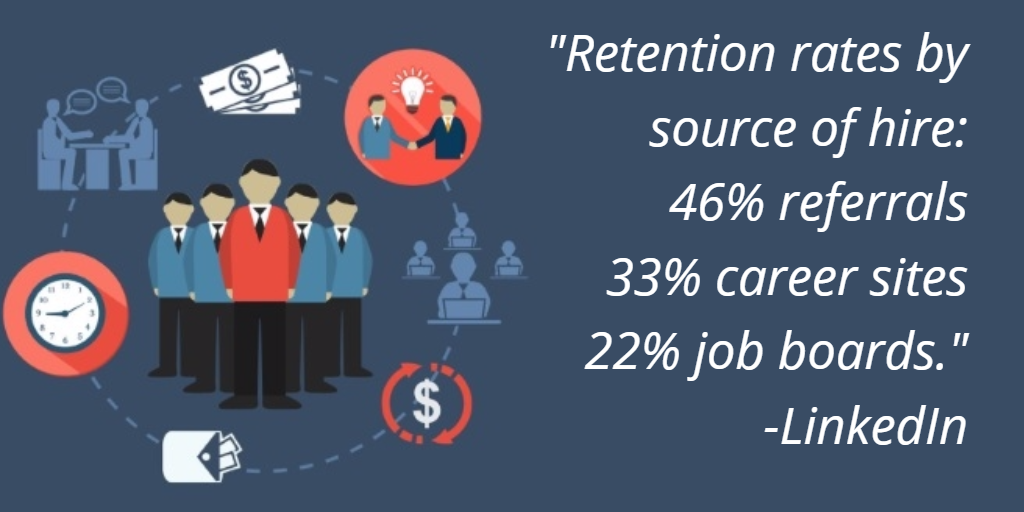![https://adoptoprod.blob.core.windows.net/article/L__RGjSOOUqC1L49JEqSAA.png?370]()
But, what if we are missing the point?
In appreciation of the great minds of the recruitment industry, today we can find a great deal of tips and tricks found in the form of scientific articles, infographics, newsletters and conferences related to the passive candidate. Most of the times the purpose is to demystify this candidate by attempting to describe in detail who they are, where they can be found, how they want to be approached, what engages them, what deters them. This is also known as identifying a candidate persona. But, even with all these answers, and even with the world’s largest database – Google – it still seems as if a part of the question remains unclear; as though there is still not enough of a solution.
Truth be told, most of the above mentioned resources are not providing a complete solution to the problem affecting the IT industry – the obvious scarcity of competent workforce. What most experts are aiming for is to navigate employers on their path around this problem and towards the few competent candidates.
But what if we improve on the subject of scarcity? How would this affect the availability of today’s candidates? How would this affect employers’ priorities? Would they change their approach to employer branding? How would they adjust the compensation and benefits strategy? What would be the new frenzy on the market?
And here is the big question: what will you do about it? Because it is not likely that many employer will, this is a chance to stand out. It is an opportunity to be proactive, to reach out to schools and universities, to build communities, and to connect with generations to come.
If you are looking for a solution to find and attract passive job seekers, recruitment marketing is your solution. Features that recruitment marketing software offer are solutions to the biggest recruiting and hiring challenges today.
Check out our 2018 Guide for Buying a Recruiting Tool!
Why wouldn’t you work for me?
If we move from the context of the industry to you as the employer, not much would change even if there were thousands of competent candidates available. Still, they may not want to work for you.
When I was an employer, I was very interested in understanding why the best candidates on the market were not working for me already. And so I reached out into the community for people who had experience and credentials above those that I required – I began picking the ‘crème de la crème’ that I would not otherwise engage to work for me.
I began to inquire, one by one, as to why they did not want to work for me, and the results were astonishing! I assure you that my findings at that time are still very much valid today. Furthermore, today, I am the passive candidate and see things from a different perspective. I can, therefore, verify from my own experience that this information is true.
It comes down to a few and very simple points. The truth is always simple, isn’t it?
Who am I dealing with?
Do you know that candidates want to know as much about you as you want to know about them?
The people whom I interviewed at the time said this to me: “Even if I didn’t have a job, I would probably not work for you.” And today I can only confirm this – I am very selective when it comes to choosing an employer. If I was unemployed for any reason, I would prefer freelancing work rather than work for an employer that does not suit me.
"Even if I didn’t have a job, I would probably not work for you. "
So, it stands to reason that, if you are not willing to cater to some of the needs of the passive candidate, it is not likely that you will attract them. But, what are their needs? The fascinating truth behind this is, it is not a unified answer (you do not have to be Google).
I was amazed to hear their preferences and descriptions of what they considered to be the most favorable. Many of them described exactly the company I was working for. They described this company’s culture, their employer value propositions and their conduct. They seemed to be the perfect fit! The only problem was, they did not know it, and I could not convince them in one conversation. They wanted evidence and a lot of it. They wanted the employer to be transparent to them.
I see many companies that are very visible about their services and products, but when it comes to the transparency as an employer, they are lacking. You cannot really find out much about their culture, their employees, their organizational structure or their values and career opportunities. So even if someone would like to get to know you, they cannot. There is not much information available about you.
So, why not share information that could be interesting to the potential candidate? You can add it to your company profile, write something on Facebook, post a picture of people working for you, inform the public on your success stories, expose the faces behind the company name, and just be open. People really want to know who they would be getting involved with. Otherwise, it is difficult for them to form an educated opinion and end up not being interested.
To what extent do you value your current employees?
Do you know that you already have the world’s best ambassadors sitting in your company?
It is difficult for me to understand why companies do not involve their own employees in the recruitment process. I am not referring to posting job ads or doing paperwork. But, there is no one better than a current employee to judge the competency of a potential candidate and to evaluate who would fit best into the current culture.
Trust me, your current employees could be your best source for forming an extremely successful employee referral program. Here are some of the most popular employee referral rewards.

It is common that people from the same profession spend time together, as friends, outside of work. Therefore, your employees are the perfect head hunters amongst those whom they already know. They trust each other and are probably influential enough. But beware, they are also the ones who know the negative aspects of the company.
It is common that people from the same profession spend time together, as friends, outside of work.
So, if I could give any advice to employers it would be – fix your internal culture before you even go out into the market. How can you know that there is something to be fixed? Here are the questions to help you: is there anybody from your current employee pool who does not serve as a good representative of your company? If so, these individuals should not have a place in your company at all. Secondly, is there anything you would like your ambassador not to mention to the community while reaching out to potential candidates? If the answer to this question is yes, remedy these aspects of your company!
What it comes down to when reaching out to passive candidates, before even going into these details of “How to write the newsletter that will make them respond?” or “Where to post job ads?”, it is best to deal with these things first:
Make sure that the employees you have are those you need and want, and let them help you attract more of them.
Open up to the community and let them get to know you.
By following these guidelines, you are solving the most important problems in the attraction of better-suited employees. It is these aspects that create a more wholesome company and facilitate the decisions that later have to be made to ease the process.
Besides finding, many HR professionals have problems retaining employees, so we have put together some tips for retaining Millennials in the workplace.
Hire top talent with the help of TalentLyft
Utilize online sourcing and reach some of the best passive talent on the market! Book a quick call with one of our product specialists to learn more.
Book a quick call 
















